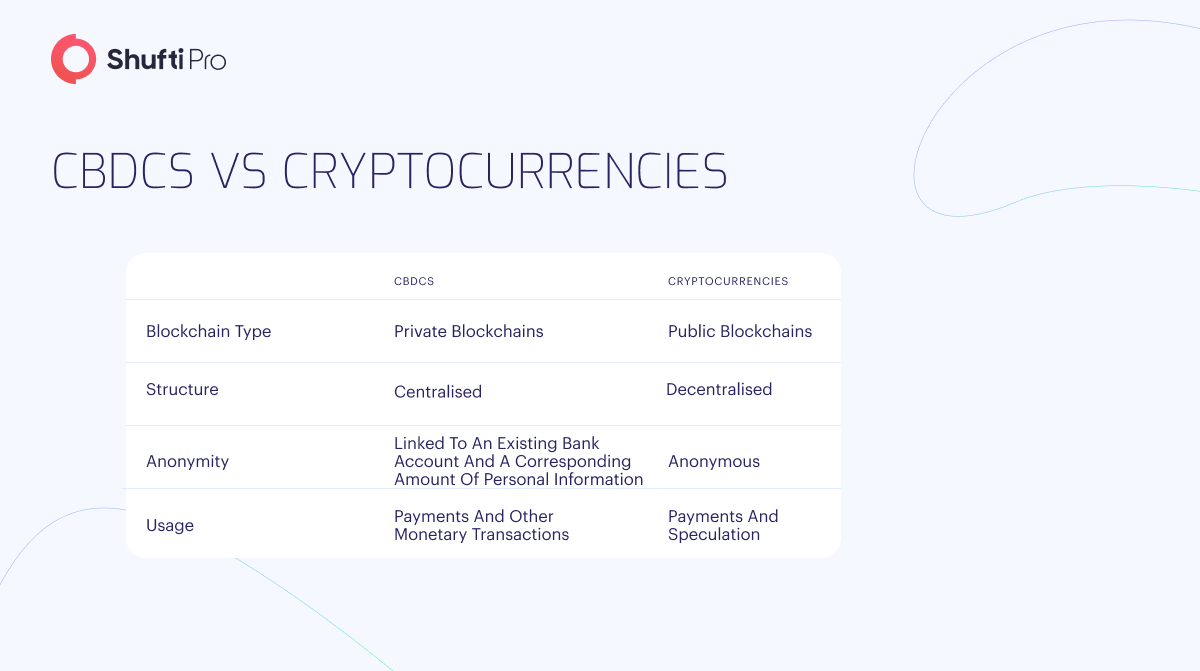Brazil to Launch CBDC: Its Impact on Financial Firms and How KYC/AML Can Help

Where does the cash come from? The country’s central bank authorises the printing of paper notes that eventually make their way into wallets. However, fewer people carry cash these days and they prefer using cards or digital wallets.
As the world is shifting towards digitisation, central banks are developing — and in some cases already testing or launching — their own digital form of paper money, called CBDC (Central Bank Digital Currency).
Brazil to Debut CBDC in 2024
Brazil’s central bank seeks to launch its digital currency in 2024. Bank President Roberto Campos Neto said that the CBDC project had received global attention. According to the Campos Neto, the design of CBDC would facilitate banks to tokenise their capital with significant efficiency gains.
”If the digital currency is actually a tokenized deposit, it inherits all the regulation that already applies to deposits,” said Campos Neto, adding that it shouldn’t disturb financial policy or spoil banks’ balance sheets.
Digging Deeper into CBDC
CDBC is the digital version of fiat money issued and regulated by the country’s Central Bank. They don’t anonymise transactions as cryptocurrencies do. In central bank digital currencies, all transactions and balances are digitally recorded and stored with independent financial entities, supervised by the Central Bank. CBDCs also encourage financial inclusion and enable efficacious implementation of financial and fiscal policy. Moreover, the central bank’s digital currency is considered legal tender by governments.

Impact of CBDC on Financial Institutions
While CBDC is a great breakthrough in the modern age, it may also bring significant challenges for businesses and their customers.
Privacy Concerns
CBDCs may threaten an individual’s privacy and sovereignty of the citizen. As the administrator is in charge of gathering and dispersing digital identifications, users have to put their privacy at risk. Each and every transaction of the customer is visible to a service provider, causing privacy concerns like those faced by Internet Service Providers (ISPs) and IT giants. For example, hackers could misuse others’ confidential details, or a central bank could restrict citizen-to-citizen transactions.
The UK House of Lords Committee has also raised the spectre of digital currencies as ‘an instrument of state surveillance’ in a largely sceptical report on the desirability of a sterling CBDC. Similarly, the Bank for International Settlements conducted a survey and found European consumers’ concerns about possible threats that CBDCs have posed whilst the EU’s consultation paper on the digital euro has cited the issue explicitly. These concerns can not be overlooked as the digital currency has the potential to provide governments with detailed information about financial transactions that could be used for monitoring purposes.
Security Concerns
Regardless of what technology is used, security continues to be an important concern for a CBDC. The safety concerns for a central bank digital currency are not different from those of traditional payment systems, digital banking, and other monetary activities. Cybercriminals continue to use malware and phishing attacks to obtain others’ credentials or private keys, hostile insiders continue to benefit from their privileged access to loot assets, and nation-states continue to spy to access data or wreak havoc on other nations’ sensitive infrastructure.
In November 2021, Chinese security officials arrested 11 suspects in the first-ever CBDC Money Laundering (ML) case. The country’s local news agency “Jiemian” gave more insights into CBDC’s first ML case. It stated, “This time, a case of telecommunications network fraud occurred in Xinmi City. Qu received an unfamiliar call saying that the items purchased online had quality problems and planned to compensate him at three times the price. Qu followed the other party’s instructions and was arrested. In the name of ‘identification verification,’ the other party requested multiple transfers, totalling more than 200,000 yuan, and then realized that he had been deceived.”
How AML/KYC Verification can Mitigate the Risk?
Countries introducing CBDCs must understand the privacy and security risks they can pose. Thus, to tackle such concerns, ID verification solutions must be deployed as a part of the business’s Know Your Customer (KYC) and Anti Money Laundering (AML) process. KYC and AML solutions authenticate the identities of customers by collecting their Personally Identifiable Information (PII) and screening them against global sanctions lists to mitigate the risk of fraud.
CBDC Screening Considerations
- Businesses must integrate digital authentication measures including Enhanced Due Diligence (EDD) and biometric controls such as face recognition solutions.
- Companies must reanalyse their transaction monitoring procedure for CBDC services, considering the increasing risks related to digital funds.
- Organisations should ensure that their sanction screening solutions are upgraded with the latest information and are able to handle the unusual challenges that CBDC screening comes with, such as anonymity, speed, and more.
How Does Shufti Fit Puzzle?
Shufti offers AI-powered KYC/AML verification services that facilitate a frictionless onboarding experience for customers. On the other hand, it protects banks and other financial firms from identity theft, money laundering, and other heinous crimes. Shufti offers KYC and AML verification solutions to 230+ countries and territories, supports 150+ languages, and is trusted globally in onboarding legitimate clients within seconds. Moreover, Shufti leads other verification service providers in authenticating identities with an accuracy rate of more than 99% and helping businesses stay compliant with global regulations.
Still have any queries on how can KYC/AML verification help your business mitigate fraud arising from CBDC?











